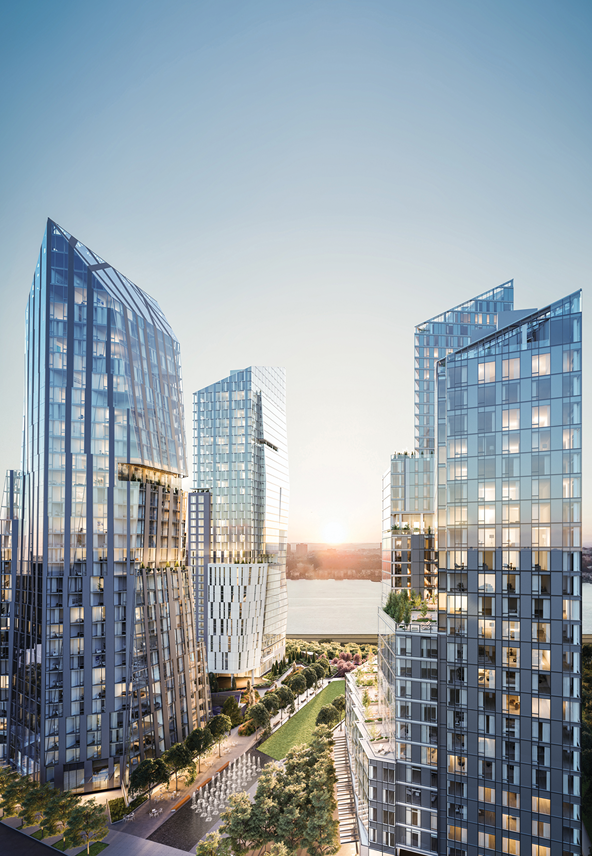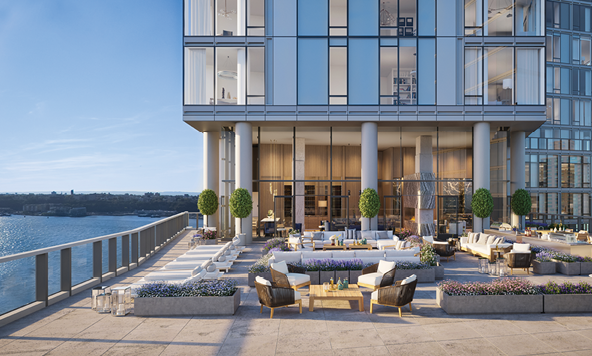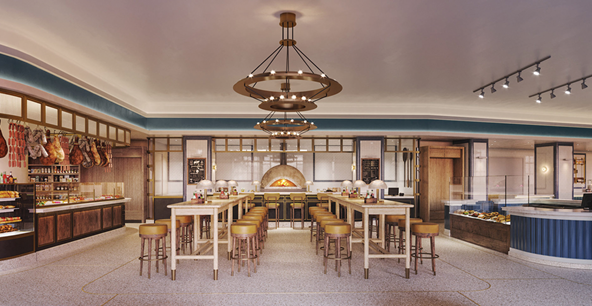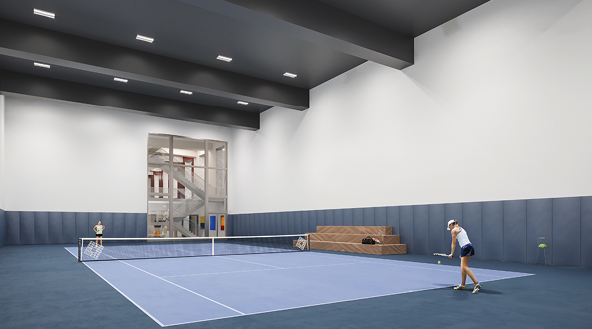- Home
- Media Kit
- Current Issue
- Past Issues
- Ad Specs-Submission
- Ad Print Settings
- Reprints (PDF)
- Photo Specifications (PDF)
- Contact Us

![]()
ONLINE

Placemaking
Editors’ Note
With 28 years of real estate experience, James Linsley also serves on the Executive Committee and the Investment Committee of GID. Prior to GID, he worked with several of the nation’s most high-profile real estate organizations. He was previously a Senior Vice President with Related for 10 years. Earlier, he worked for Trump/New World Project Management (The Trump Organization and New World Development). He has been a member of the International Council of Shopping Centers, the Urban Land Institute, the Urban Development Mixed-Use Council of the Urban Land Institute, and the Congress for New Urbanism. Linsley holds a B.A. in architecture and a B.S. in civil engineering from Lehigh University as well as an M.S. in Real Estate Development and an M.S. in Urban Planning from Columbia University.
Company Brief
Founded in 1960, GID (gid.com) is a privately-held and fully-integrated real estate company that develops, owns, and operates a premier portfolio of existing properties and development projects valued at over $18 billion. During its corporate history, GID has developed or acquired over 80,000 residential units and 17 million square feet of commercial space in 24 states and three continents across all asset classes including multifamily rental properties, for-sale condominiums, industrial, retail, office, hotel and parking uses. With offices in Boston, New York, Washington, D.C., Atlanta, Houston, Denver, San Francisco, and Los Angeles, GID employs nearly 900 real estate professionals throughout the United States and has divisions specializing in development, acquisitions, real estate funds, property management, and portfolio and asset management.

Waterline Square
What is the history and heritage of GID Development Group and how has the business evolved?
We formed GID Development Group in 2007, and very quickly thereafter we started to enter the great recession. This would not seem to be the greatest time to be starting a new development business, but in hindsight it offered some interesting opportunities. We were able to attract very good personnel because we were creating something new and growing at a time when others were contracting. It also provided the opportunity to put projects together and to get land assemblages, entitlements and approvals in place during a downturn. This allowed us to create some advantageous development scenarios, either because the land basis was less expensive or because we were able to work with municipalities during the downturn to create more favorable zoning approvals or tax incentives.
We then began to build fairly early in the cycle. In fact, it was so early in certain cases that we built some of our initial projects with all of GID’s own equity – without construction lenders – because we saw the light at the end of the tunnel for certain asset classes, particularly multifamily, more quickly than others. We were able to get out of the gates early and build a very favorable pricing, even if we couldn’t convince construction lenders. We had really nice timing on some of those early projects. By the time we finished those projects, rent growth was on the upswing. We then began pursuing increasingly larger and more complex developments and our team of people began to grow larger as well.
As our projects and our team got bigger and our development programs became more complex, we were attracting larger and more diverse capital sources. Now, looking back ten years later, you can see that we’ve been able to attract the best capital partners in the world, including the world’s largest construction lenders and the world’s largest sovereign wealth funds.

Two Waterline Square Amenity Terrace
Will you highlight GID’s current development projects?
We specialize in high-rise luxury multifamily buildings and iconic mixed-use projects that create a real sense of community. It’s about placemaking. We have two very large-scale multi-phase mixed-use projects in play at the moment. One is in Houston, called Regent Square, and a second is in Atlanta, called High Street. These are both very extensive undertakings. Regent Square is a $2 billion, 24-acre mixed-use project that will ultimately include approximately 2,000 residential units, 400,000 square feet of retail, restaurant and entertainment space and 250,000 square feet of new office space, as well as new streets, parks and public spaces. High Street in Atlanta is almost twice as big. That’s probably a $2.5- to $3-billion project across 42 acres. We secured entitlements that allow us to build up to 3,000 residential units, 400,000 square feet of retail, restaurant and entertainment space, approximately a million square feet of office and up to 400 hotel rooms. The project will also include new streets, sidewalks, landscaping and public spaces, all of which will be actively programmed to help create a very lively environment of live, work, shop, dine and play.
In New York in 2013, we began to pursue three sites on the West Side. We are currently nearing the opening of our Waterline Square project, which is three buildings designed by world famous architects, Richard Meier, Rafael Viñoly and Kohn Pedersen Fox. This is a $2.5-billion project comprising 1,131 residential units that are both for-sale condominiums and rentals, a 2.6-acre park and over 100,000 square feet of amenities in a private club we call the Waterline Club, which is available to all the residents within Waterline Square. It is a very ambitious undertaking and probably the largest single-phase residential project underway in New York and, therefore, maybe in the country. We built all three buildings at one time – we did not phase them. We also financed it all at once and constructed it all at once because the vision was, once again, one of placemaking. It is about forming a community, and if we’re going to create this community, we cannot create simply the promise of it in the future. We want to deliver it now, so rather than make residents suffer through years of construction, we’re opening it all at the same time. We’re right on the cusp of that opening as we speak and it is very exciting.

Cipriani at Waterline Square
We also have several other very notable high rises around the country, including two award-winning, 41-story rental apartment buildings in Seattle. One is called Cirrus and the other is called Stratus. These are very large buildings; one is 356 units and the other is 396 units. They are on sites across the street from one another, so they’re almost like brother/sister buildings, with a new city park located in between them. Our development was the catalyst to get that park underway. After we tied up these sites and started the development process, Amazon, which already had their world headquarters in Seattle and in close proximity to us, bought several sites all around and directly across the street from our two buildings. That is now the new home of Amazon’s World Headquarters.
We have a similar, very innovative, very ambitious high-rise building in Houston called The Sovereign, which was quite different than anything else on the market when we built it.
I think when you look at these various projects, you see we’ve developed a reputation and a history of doing things a little differently, arguably a little better, than what is happening in a given marketplace. We build projects that are of a higher quality. We have a very long-term hold mentality. We’re not merchant builders. We don’t flip properties. We hold them for, in some cases, decades, so the quality of the build and the way that they operate is very important to us. We not only develop them, but we own them and operate them long-term. We’re very cognizant of our residents’ needs and we really think about how those needs evolve over time.
Are you focused on brand awareness for the GID brand or is it more about the individual property brands?
Both are important. Historically GID was more focused on purchasing and investing in existing assets. We did this in a very significant way throughout the country and even internationally across a range of asset classes, whether it be residential, retail, office, industrial or hotel. As we have veered more into the development realm, particularly with the formation of GID Development Group in 2007, brand awareness has become more important. When we’re creating something new that doesn’t have a history yet, in the case of a new development, we need to promote that product and brand to future residents or consumers who will shop or dine there. I think our brand awareness is becoming increasingly important, particularly where the field is a little bit crowded at times in certain marketplaces and we need to differentiate ourselves.

Indoor Tennis Court at The Waterline Club
How do you focus your efforts leading GID Development Group and is it critical for you to still spend time with clients and visit the projects?
I think it’s very important for me to be involved both at the macro and the micro levels. This business is so much about not only understanding the big picture, but also understanding the details. It is that grasp of the details and the thoughtfulness of taking something all the way from concept to completion that I think can set projects and developers apart from one another. For example, when we started to pursue our Waterline Square project, I was living on the East Side of Manhattan, but I moved to the West Side, one block away from the site, because I wanted to watch the site very closely. I wanted to be able to look out my window – literally – and see the site every day.
I also wanted to understand the neighborhood better than anyone. I wanted to know what men, women and children did in that neighborhood. I wanted to know what they did on a weekday, a weekend, in the daytime and in the evening. I wanted to know what was attractive about that neighborhood and what that neighborhood was lacking so I could use all that knowledge as we conceived what Waterline Square could become. That was a very intentional decision on my part because of the scale and importance of this project. In my opinion, if every developer lived adjacent to their development sites, projects would be developed differently. Waterline Square is the last piece of the puzzle of the larger masterplan known as Riverside South that runs from 59th to 72nd Street. I actually started my career on that project when I came out of graduate school in the ’90s, so I have a real personal obsession with the completion of that masterplan, and the Waterline Square project in particular.![]()